The Small Body Group
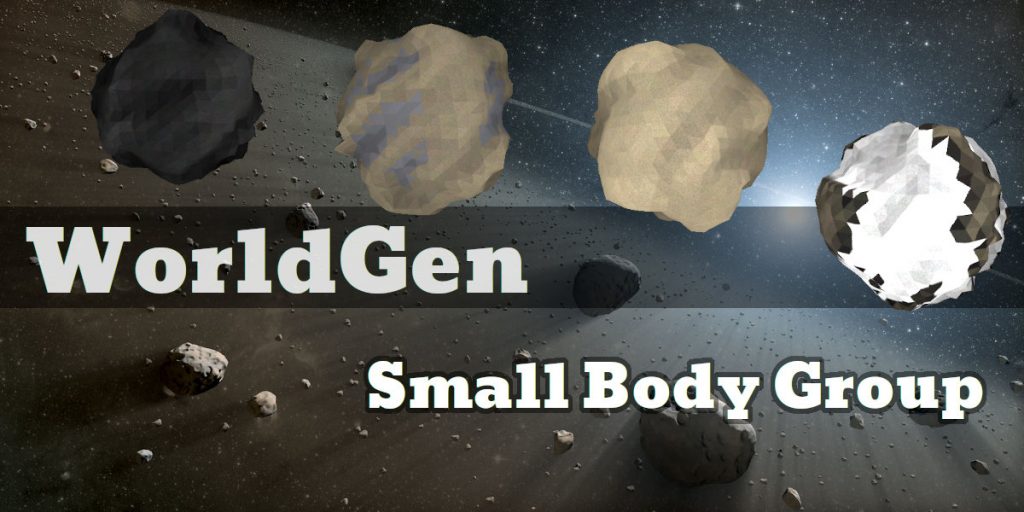
The next group of planetary types in WorldGen’s version of the Planetary Classification List is the small body group, which consists of individual objects which are very definitely not planets, but are the types of objects generally classified as asteroids or comets. At their largest, they may be a few hundred kilometres in diameter, but most are barely a kilometre in size.
Despite being common, they are most often either as planetoids within Belts or as moons of larger worlds. In the former case, they won’t be listed on star charts as individual bodies unless they are of particularly large size. So whilst the majority may be sub-kilometre in size, those listed on star charts will tend towards having tens to hundreds of kilometre diameters.
Vulcanoidal Class
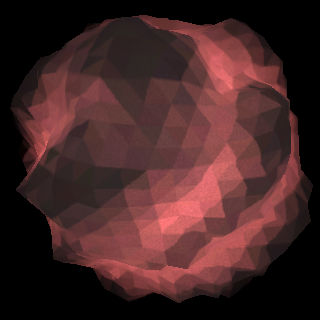
The Vulcanoidal Class consists of a single type of object – a Vulcanian. These are rocky/metallic bodies in epistellar orbits. Due to their proximity to their star, they have very high surface temperatures, and may be at least partially molten.
Such bodies are rare, since their orbits are often unstable, and they exist in a narrow window between oblivion and more typical ‘asteroidal’ objects.
They often have high metal content, and may contain exotic minerals not found elsewhere, so despite the difficulty in mining them, they can be highly desirable targets.
Asteroidal Class
The asteroidal class is the largest of the classes in the small body group, and includes most of everything that is generally considered to be an ‘asteroid’. They are mostly rock, with a mix of metallic and volatile content.
Aggregate Type
These bodies are piles of rubble held together loosely by gravity. They are not chemically bound, so can be easily broken apart either by impact or a gravitational disturbance. They are unstable, difficult to mine, and generally considered useless for most purposes.
The exception is that due to their large number of holes, they can make for good hiding places at short notice. Over the long term though, their instability makes them unsuitable for long term settlements.
WorldGen doesn’t yet have a good way to model what an aggregate body looks like.
Carbonaceous Type
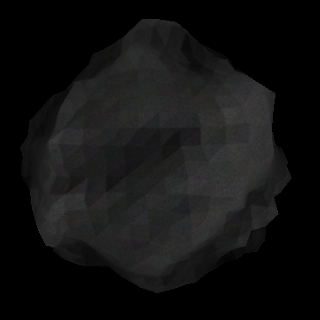
Also known as C-Type asteroids, Carbonaceous are relatively common in most asteroid belts. They have high amounts of carbon, and tend to be quite dark in colour.
They may contain some proportion of clays, silicates, metals and volatiles, depending on their proximity to their star. They are the most common type of asteroids, making up well over half the total number in most star systems.
Gelidaceous Type
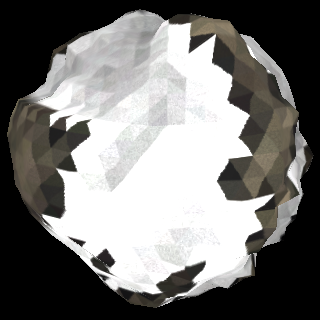
The Gelidaceous type of asteroid tend to be found in the outer realms of a solar system, beyond the snow line where volatiles can collect and remain stable.
They are made up of a mixture of rocky minerals and ices, often silicates and water.
Metallic Type

The Metallic type of asteroid are those with the highest density of metals, especially heavy metals. They will be found in typical asteroid belts where they make up less than 1% of the total number of bodies, or in Vulcanian or Metallic Belts where their numbers are greater. They tend to be small, but very dense.
Though they are low in volatiles, they are rich sources of metal ores of all types with a composition greater than 50%, including precious metals and radioactive ores. As such they are the primary target for mining once sufficient access to water has been obtained.
Silicaceous Type
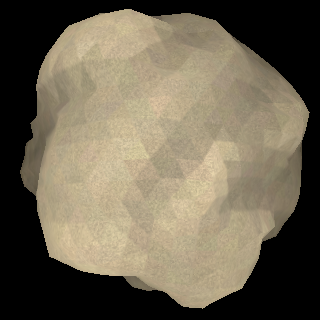
Also known as S-type asteroids, Silicaceous mostly consist of magnesium silicates and iron, and tend to be dominant in the inner part of the solar system. Overall, they are the second most common type of asteroid.
They are quite bright, and a good source of minerals for industrial purposes. They can be slightly reddish in colour, depending on their exact composition. They can make good settlements, since they are stable and the large amount of rock is easy to hollow out and makes for good insulation.
Cometary Class
Found mostly in the outer edges of solar systems, the Cometary Class are mostly water-ice, and have highly elliptical orbits that may take them temporarily into the inner system. As well as consisting largely of water, they may contain other fragile compounds that have built up after billions of years of radiation in an otherwise static environment. They can be useful for mining, though getting to them can be hard.
There are two broad divisions of Cometary bodies, Passive and Active.
Passive Type
Passive Type comets are dormant bodies that spend their entire lives in the coldest parts of the solar system. They are sub-typed according to where they are found. They are extremely cold bodies, and may be unchanged for billions of years.
Though these bodies are very similar to Active comets in composition, they have fairly regular (i.e., circular) orbits, so are treated in much the same way as other planetoids or moons.
Oort Subtype
These bodies are found in the Oort clouds around star systems, at distances of 1,000 AU or more. They never venture closer to this, and are generally considered dead and dormant. They are often billions of years old, and the huge distances between them make collisions very rare. The close passage of a neighbouring star is the most likely thing to send them plummeting into the inner regions, or out into deep space.
WorldGen doesn’t yet define Oort Clouds for systems. Given the huge expanse of such regions, they may only be defined at a very abstract level.
Kuiper Subtype
Kuiper bodies are found in the region generally defined as the kuiper belt. This is on the outer edge of the main planetary system, but significantly closer – maybe up to 100 AU.
Since the difference is generally location rather than makeup, whether something is defined as a Kuiper or Oort object can be hazy where the regions overlap.
Centaur Subtype
These are Kuiper or Oort type bodies which have been ejected from those regions and can now be found in the outer planetary region. Over time, their orbits are likely to be further changed by the gravitational tug of the outer planets, and find themselves either thrown out of the system entirely, or falling towards the inner system to become an active type.
Active Type
Cometary bodies which have fallen into the inner system and are now on long elliptical orbits are of Active Type. Since these bodies are often very similar in composition, they are classified according to their orbit.
All of them are high on volatiles, with active regions as they approach a star, becoming dormant as they move back out into the darker and colder regions of the system.
WorldGen doesn’t yet model active cometary objects at all, since it only manages circular orbits, and by definition these have highly elliptical orbits. There is also the question of ordering such objects – they don’t fit easily into the I, II, III… planetary numbering scheme.
They may simply be classed according to their orbital period, separately from the rest of the objects in the system.
Brevis Subtype
Brevis bodies are active comets which have an orbital period of less than 200 standard years.
Dirunitus Subtype
Dirunitus bodies are active comets which have an orbital period of more than 200 standard years.
Effigia Subtype
Comets on a hyperbolic or parabolic orbit are classed as the Effigia subtype. They are often not discovered until they’re in the inner system, or leaving it, but their orbit is such that they’ll never return. After a few centuries they’ll be well on their way out of the solar system.
Damocloid Type
These are comets which have lost all of their surface volatiles, and are now very similar to rocky asteroids. Though such comets are usually ancient, some short-duration comets can become Damocloid a lot quicker.
A lot of comets will tend to break up though once they’ve lost a significant fraction of their volatiles, so Damocloid are quite rare.